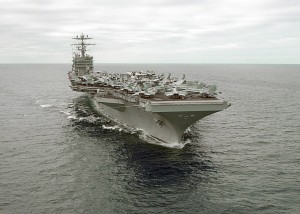[The world imperialist system today has entered a period of crisis, internal instability and disarray, growing internal conflict and inter-imperialist contention, conflict, and the beginnings of opposing bloc formations. It is a far-from-healthy and broadly discredited system, forcing the costs of its desperate wars and troubled (and false) bourgeois “recoveries” on the masses of people worldwide. Wave upon wave of resistance and rebellion has begun, sometimes toppling old imperialist puppets, though finding the path to create liberated societies very difficult. Fantasies that the US had, since WW2, successfully formed a system of efficient and unchallengable control of world imperialist domination, have fallen on hard times. Imperialist Russia and imperialist China have grown from the defeat of socialism and the seizure of power by capitalists, and have set upon an assertion of power and authority in regional, economic, political, military, monetary and financial affairs (though each is struggling to contain growing internal discontent). Anti-imperialists and revolutionaries who only think in the framework of decades-long opposition to US hegemony in the world system will look in vain, and to their own discredit, for friends or allies among the contending imperialists. The only path forward is to build revolutionary proletarian class-conscious parties and mass-based political forces with eyes wide open, independent of ties and influence by any and all imperialists.
Revolutionary Frontlines has recently received a new study from redpath.net, which examines the shape of the imperialist system today, with special emphasis on the still-debated role of China and Chinese imperialism. The introduction to this path-breaking study and analysis is posted here below. The entire document can be viewed at the website of http://www.red-path.net, where the document (produced by an independent research and writing group) was first posted. It can also be viewed and downloaded at http://www.mlmrsg.com/79-statements/82-is-china-an-imperialist-country-considerations-and-evidence. — Revolutionary Frontlines]
IS CHINA AN IMPERIALIST COUNTRY? by NB Turner, et al.
It has long been known and understood that the entire world has been under the control of capitalist-imperialism. For a time, a section of this world broke from it, beginning with the victory of socialism in Russia and continuing through the Chinese Revolution, constituting a socialist world. Yet, in time, the socialist countries, through internal class struggles in politics and economics, were seized by capitalist conciliators and advocates, and then by capitalists themselves, who were largely within the ruling communist parties themselves. First in Russia, and later in China, when these counter-revolutions and coups took place, there ensued a period of entry and integration into the world imperialist system. The Soviet Union, at first under the existing signboard of socialism, continued much of its established national and economic power relations into a new social-imperialist bloc (socialist in name, imperialist in reality). The Russian capitalist-imperialist attempt to maintain this bloc, or important sections of what had been part of this bloc, and its historic allies, has continued in the years since the “socialist” signboard was discarded. In China, the defeat of the proletariat and the capitalist capture of state power, after the death of the great revolutionary Mao Zedong, have also led to a period of integration into the world imperialist system. China still operates under a “socialist” signboard, but has conducted itself unambiguously as a capitalist power.
Before the last decade, especially since the demise of the “socialist bloc,” the US was commonly seen as the sole Superpower, to which all other powers had to defer. The system which the US had designed, at the end of WW2, was global in scope, and to some more “democratic” in appearance than the old colonial empires. But it was built around the elitist privilege of power and authority, meaning the US as Superpower was at the centerpiece of the controls.
But in the last decade the imperialist world system is not what it used to be. Throughout the world, corrupt and comprador regimes have faced significant and often unprecedented mass popular opposition movements which have revealed the deep instability of the old neo-colonial arrangements. Continue reading














